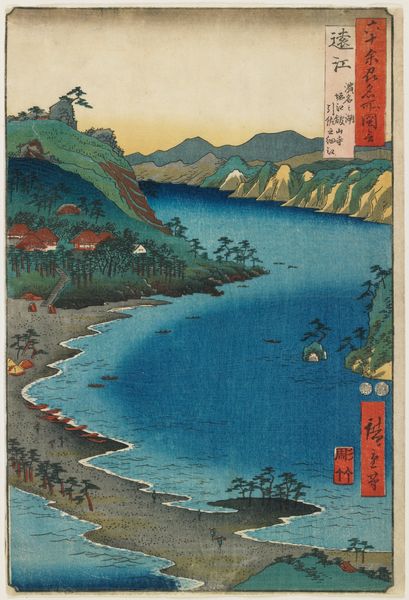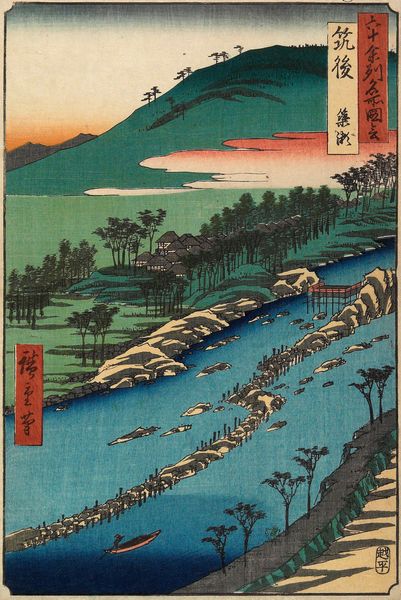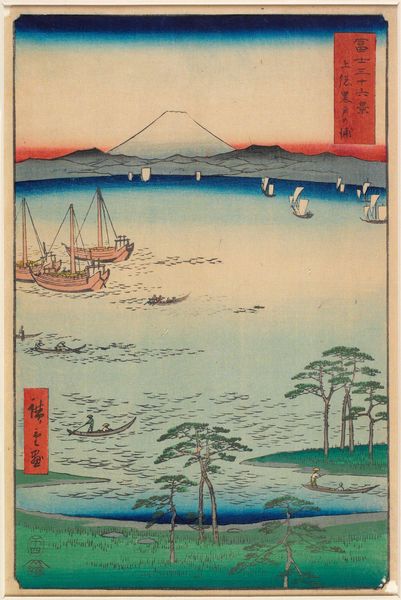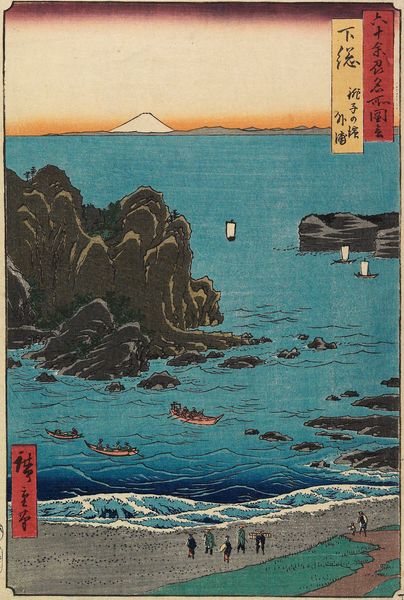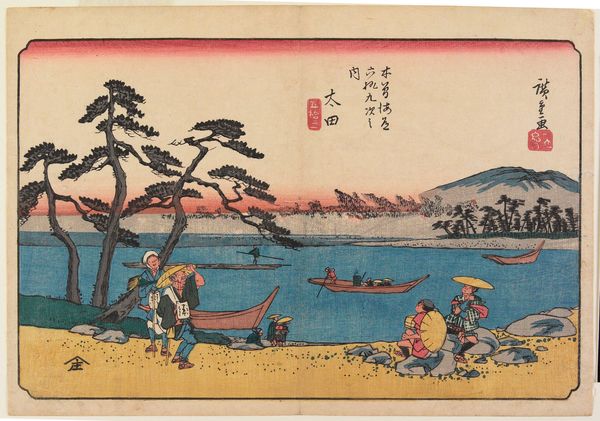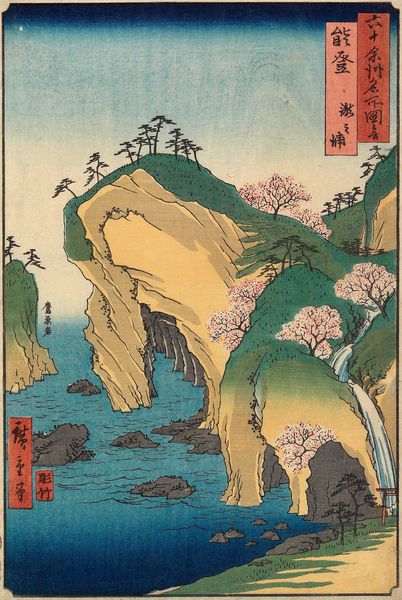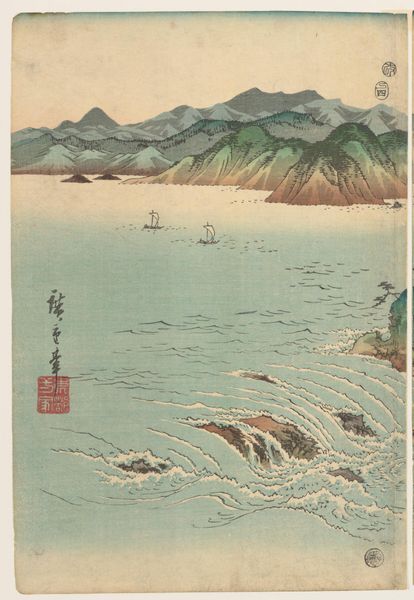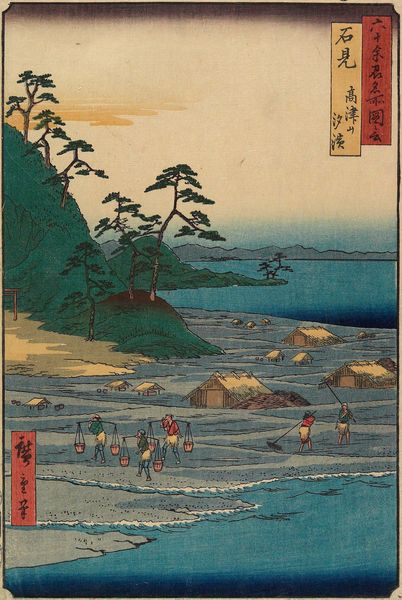
print, paper, ink, woodblock-print, woodcut
#
narrative-art
# print
#
asian-art
#
landscape
#
ukiyo-e
#
paper
#
ink
#
woodblock-print
#
geometric
#
woodcut
#
orientalism
#
line
#
watercolor
Dimensions: 13 7/16 × 8 15/16 in. (34.2 × 22.7 cm) (image, vertical ōban)
Copyright: Public Domain
Curator: This woodblock print is titled "Goshiki (Five-color) Beach," likely created between 1855 and 1859, by Utagawa Hiroshige. It resides here at the Minneapolis Institute of Art. Editor: It's instantly calming. A serene seascape, punctuated by these perfectly arranged boats... almost like musical notes dancing on water. Curator: Indeed. This piece offers an interesting insight into 19th-century Japanese life, depicting a vibrant fishing scene with numerous boats headed towards the shore. We can examine how the concept of "work" intersects with visual pleasure here. Editor: Visual pleasure, absolutely. But it feels a little… regimented? All the figures facing the same direction in neat rows. What stories lie behind those uniform postures? Curator: Perhaps that uniformity speaks to the structured societal norms and economic activities of the Edo period. Hiroshige, along with artists like Hokusai, were essential in the dissemination of Ukiyo-e prints, providing visual representations of everyday life and landscapes, impacting social perceptions, and also the politics of representation itself. Editor: You're right. But knowing it's Ukiyo-e, understanding the intention... does that diminish the mystery? Because honestly, my first impression was purely emotional – that water just shimmers. I was thinking about a summer afternoon, nothing heavy! Curator: Not at all. We can analyze art and experience beauty simultaneously. It’s this interplay between affect and analysis that makes art so enriching. Considering that landscapes were often intertwined with expressions of national identity and cultural values, how does this print shape the discourse around representation? Editor: See, you did it again! "Representation". I love how you give us layers to think through. I’m over here thinking how Hiroshige made waves look like dreams, while you are diving into cultural and theoretical depths! It is gorgeous, though. Let's just agree it is gorgeous and heavy with context. Curator: Agreed. "Goshiki Beach" offers a glimpse into both aesthetic beauty and deeper social considerations, revealing narratives embedded in line, color, and composition. Editor: So, a postcard from the past, filled with sunshine and subtext? I like it.
Comments
minneapolisinstituteofart almost 2 years ago
⋮
Awaji is an island located in the eastern part of the Seto Inland Sea in the southwest Japan. The island's west coast is covered with pebbles in various colors, hence the nickname Goshikihama, or Multi-colored Beach. Fishermen in this print are shown trawling their nets from an offshore reef, where sea bream have long been known to breed in summer. Skillfully coordinating their efforts from separate boats, the fishermen drop large nets in the shallow waters. Beyond the fishing scene, Hiroshige depicted the rocks and mountains of the coastline.
Join the conversation
Join millions of artists and users on Artera today and experience the ultimate creative platform.
